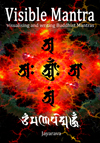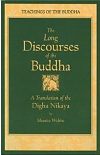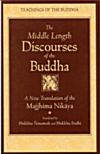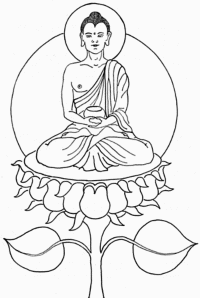

śā kya mu ṇi
Śākyamuni is a name for the nirmana-kāya aspect of the Buddha, and is therefore considered by Buddhists to be synonymous with the historical Buddha. In early texts the Buddha is most often referred to as Bhagavat or "the Blessed One", or as Gautama (Pāli Gotama) his clan name. He refers to himself as tathāgata or sugata. We refer to him as "the Buddha". Buddha is the past-participle of the verb budh ('to awaken') and thus means 'awakened'.
It is said that the historical Buddha grew up in a life of luxury but after seeing that everyone would grow old, become ill, and die, he abandoned his home and joined a group of ascetics seeking the way beyond death. Subsequently he abandoned severe asceticism as well and pursued a middle way between hedonism and asecticism that enabled him to make a decisive breakthrough known as bodhi, awakening, usually translated as enlightenment. He spent the rest of his life teaching others how they could also awaken.
Seed Syllables
 'a' in Siddham |
The letter a is the source of all the other letters, the source of all mantras. |
 a in Tibetan (Uchen) |
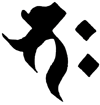 bhaḥ in Siddhaṃ |
In the Shingon school the seed-syllable of Śākyamuni is bhaḥ. This comes from the first letter of the most common way of addressing, or referring to, the Buddha - bhagavat - with the visarga (ḥ). The visarga is a common indicator of a bīja in early tantra, but is eclipsed by anusvāra (ṃ) in later traditions.
|
mantra
Siddhaṃ

Tibetan Uchen

Devanāgarī

Lantsa

Transliteration
oṃ mu ni mu ni ma hā mu ni śā kya mu ni svā hā
oṃ muni muni mahāmuni śākyamuni svāhā
Alternate Tibetan Mantra

oṃ muni muni mahāmuniye svāhā
Notes
Muni is an ancient Indian word for a sage, usually associated with silent sages. Śākya (Pāli Sakka) is the name of the tribe from which the historical Buddha came from, so Śākyamuni is the sage of the Śākyan tribe. Some scholars have tried to identify the Śākyans with the Scythians, known as the Śaka in Buddhist texts. This is extremely unlikely.
The alternate mantra uses the dative form of the word mahāmuni indicated by adding 'ye', which indicates the dative case meaning "to or for the great sage". You may also sometimes see the -ye suffix added to Śākyamuni in the standard version.
Professor Richard Gombrich pointed out in his Numata Lectures in 2006 that when -gata is used in compounds of this type it loses its primary meaning and means simply being. Tathāgata then would mean "one who is like that". See for instance Michael Coulson's Teach Yourself Sanskrit, p.111. "This is tantamount to saying that there are no words to describe his state; he can only point to it" (Gombrich 2006 : lecture 6, and forthcoming). However Buddhists most often take tathāgata to mean "Thus Gone", taking gata to be the past-participle of gam- "to go".
Selections from Free Buddhist Audio.
- Who is the Buddha? - by Sangharakshita.
- Archetypal Symbolism in the Biography of the Buddha - by Sangharakshita
- Discerning the Buddha by Sangharakshita


